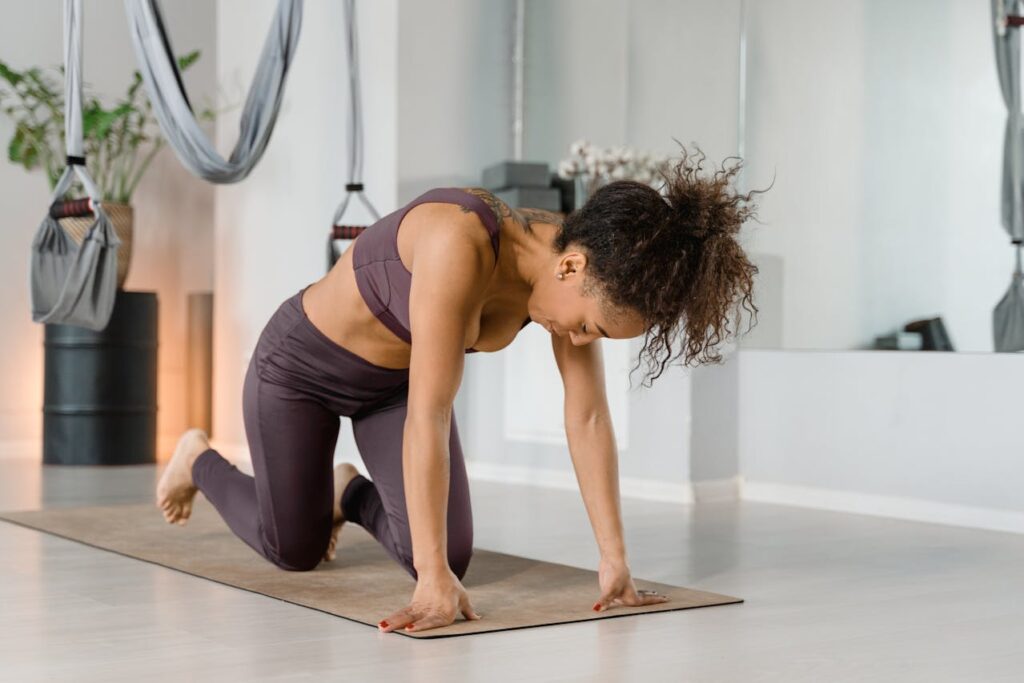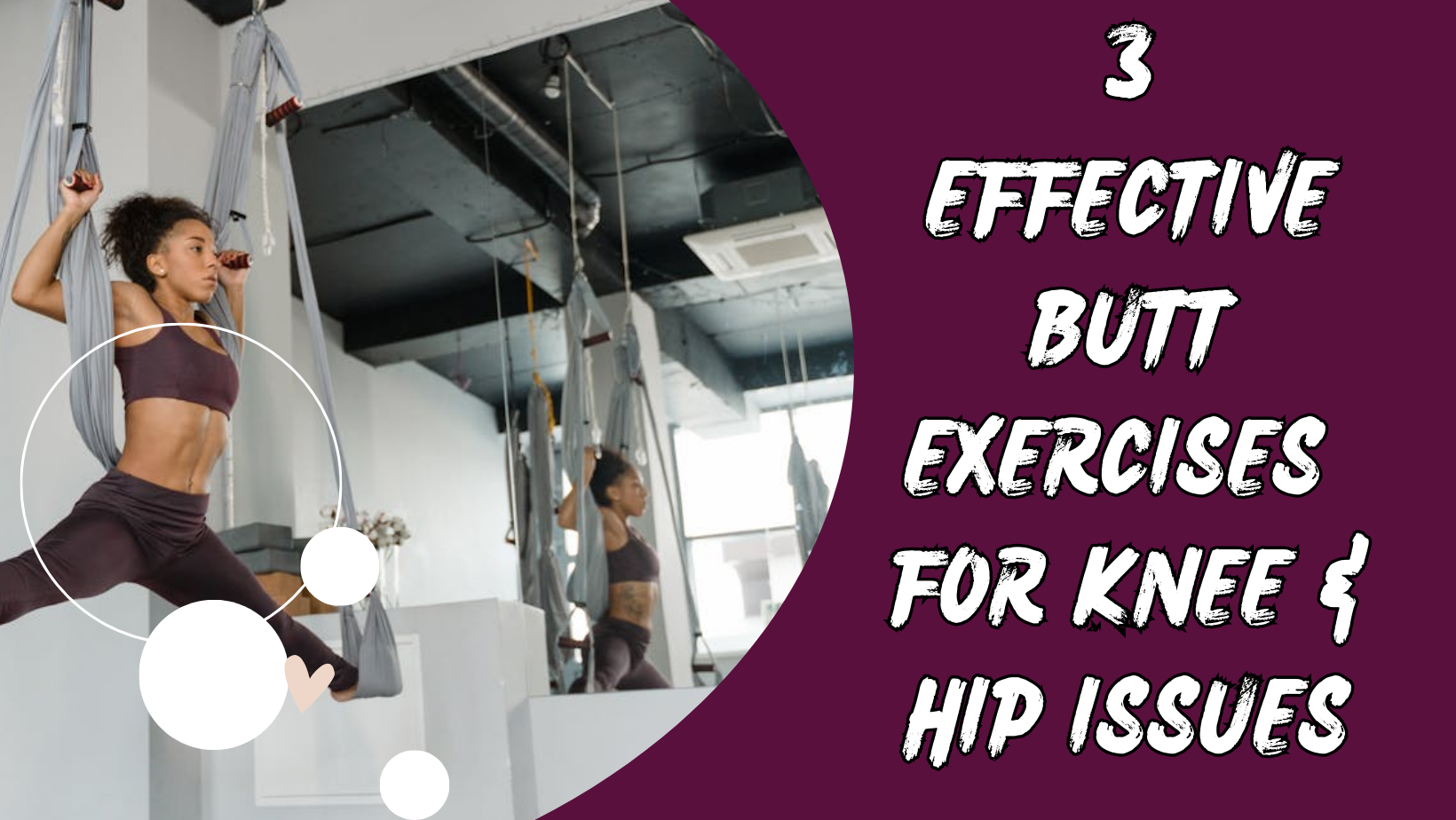Need some effective butt exercises that won’t aggravate your knee or hip issues? Look no further! In this article, we’ll be sharing four incredibly beneficial exercises specifically designed to target your glutes without putting any strain on your knees and hips. Whether you’re recovering from an injury or simply want to strengthen your lower body, these exercises are perfect for you. So, get ready to tone those glutes and boost your overall fitness level, all while keeping your knees and hips happy and healthy!
Benefits of Butt Exercises for Knee and Hip Issues
When it comes to knee and hip issues, finding exercises that target the problem areas without putting additional strain on them can be a challenge. However, there is good news – incorporating butt exercises into your workout routine can provide numerous benefits for individuals with knee and hip issues. These exercises not only help strengthen and tone the glutes, but they also promote better hip and knee stability. In this article, we will explore three effective butt exercises that can be modified to accommodate knee and hip issues, ensuring a safe and effective workout.
1. Glute Bridges
Glute bridges are a fantastic exercise that primarily targets the gluteus maximus, the largest muscle in the gluteal region. This exercise is beneficial for individuals with knee and hip issues because it does not require excessive knee flexion or deep hip bending. By engaging the glutes, glute bridges can help improve overall hip stability and function, reducing stress on the knees and hips.
1.1 How to Perform Glute Bridges
To perform glute bridges, follow these steps:
- Lie on your back with your knees bent, feet flat on the floor, and hip-width apart.
- Engage your core and squeeze your glutes as you lift your hips off the ground.
- Keep your shoulders and upper back firmly on the floor.
- Hold the position for a few seconds, then slowly lower your hips back down.
- Repeat for the desired number of repetitions.
1.2 Modifications for Knee and Hip Issues
If you have knee or hip issues that make standard glute bridges challenging, you can modify the exercise to suit your needs. Here are a few modifications you can try:
- Place a resistance band just above your knees to provide extra support for your knees and hips.
- Perform glute bridges with your feet elevated on a step or block to reduce the range of motion.
- Use a stability ball to add extra stability and support during the exercise.
2. Quadruped Hip Extensions
Quadruped hip extensions are another excellent butt exercise that can help individuals with knee and hip issues. This exercise targets the glutes, hamstrings, and core muscles, promoting improved hip stability and strengthening the posterior chain. By keeping the knees and hips in a stable position, quadruped hip extensions are gentle on the joints, making them suitable for those with knee or hip problems.

2.1 How to Perform Quadruped Hip Extensions
To perform quadruped hip extensions, follow these steps:
- Start on all fours, with your hands directly under your shoulders and knees under your hips.
- Engage your core and keep your spine neutral.
- Lift one leg off the ground, extending it straight back while keeping the knee bent at a 90-degree angle.
- Squeeze your glutes as you lift your leg, ensuring the movement comes from the hip.
- Lower your leg back down to the starting position.
- Repeat with the other leg.
2.2 Modifications for Knee and Hip Issues
To modify quadruped hip extensions for knee and hip issues, consider the following adjustments:
- Use a resistance band around your thighs to add support for the hips and knees.
- Execute the exercise by lifting only a few inches off the ground, reducing the range of motion.
- Perform the exercise on a stability ball to provide added stability and support.
3. Clamshells
Clamshells are a popular butt exercise that targets the gluteus medius, a muscle that plays a crucial role in hip stability and function. For individuals with knee or hip issues, clamshells can be beneficial as they do not require any deep bending of the knees or hips. By strengthening the gluteus medius, clamshells can enhance overall hip stability, helping to alleviate knee and hip discomfort.
3.1 How to Perform Clamshells
To perform clamshells, follow these steps:
- Lie on your side with your legs bent at a 45-degree angle, knees together.
- Rest your head on your arm for support.
- Engage your core and squeeze your glutes as you lift your top knee as high as possible while keeping your feet together.
- Hold the position for a few seconds, then slowly lower your knee back down.
- Repeat on the other side.
3.2 Modifications for Knee and Hip Issues
If you have knee or hip issues, consider these modifications to make clamshells more suitable for your needs:
- Use a resistance band around your thighs to add extra resistance and support.
- Perform the exercise with your legs slightly bent instead of fully extended to reduce strain on the knees.
- Utilize a stability ball to increase stability and provide additional support.
Incorporating these butt exercises into your fitness routine can bring numerous benefits for individuals with knee and hip issues. By targeting the glutes and promoting hip stability, these exercises can help alleviate discomfort, improve mobility, and enhance overall strength. Remember to consult with a healthcare professional before starting any new exercise program, especially if you have knee or hip issues. With their guidance and these effective butt exercises, you can take steps towards a healthier and stronger body, even with knee and hip concerns.

